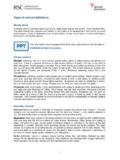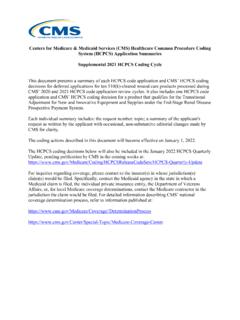Transcription of bacterial-cellulose for capacitive deionization Ultra-thin ...
1 Ultra-thin carbon nanofiber networks derived from bacterial - cellulose for capacitive deionizationYong Liu a, Ting Lu a, Zhuo Sun a, Daniel H. C. Chuab, Likun Pan a,*aEngineering Research Center for Nanophotonics & Advanced Instrument, Ministry of Education, Shanghai Key Laboratory of Magnetic Resonance, Department of Physics, East China Normal University, Shanghai 200062, ChinabDepartment of Materials Science and Engineering, National University of Singapore 117574, Singapore * Corresponding author. Tel: 86 21 62234132; Fax: 86 21 62234321; E-mail: TheRoyalSocietyofChemistry2015 Fig.
2 S1. Photograph of bc-CNFs treated at (a) 800 C and (b) 1000 shown in Fig S1, when the carbonization temperature was over 800 C the free-standing structure of the bc-CNFs electrode was S2. FTIR spectrum of S3. (a) Nitrogen adsorption-desorption isotherm and (b) Nyquist plot of adsorption-desorption isotherm of e-CNFs is presented in Fig. S3 (a). The specific surface area of e-CNFs is m2 g-1, which is determined by the Brunauer-Emmett-Teller method. Fig. S3 (b) shows the Nyquist plots of e-CNFs electrode and the fitted Rct of e-CNFs is.
3 3












